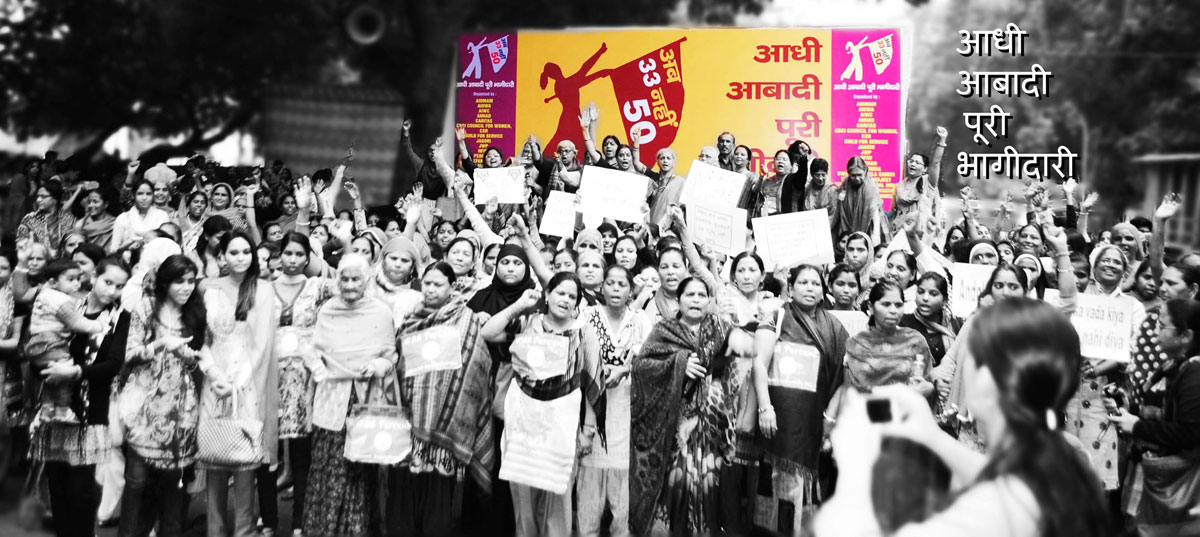With all the talk about reservation for women, and continued headlines surrounding sexual assault and harassment of girls and women alike, let’s ask one simple question first: why do we care? Beyond the fact that all genders are equal and deserve to be treated with equal respect, empirically why should we worry about not having enough female politicians in our country? Research has proven that have more women politicians in legislative bodies improves health and education indicators in a country, with the additional benefit of paving way for more women in politics.
A recent paper by Ross Macmillan, Naila Shofia and Wendy Sigle used mortality related data from 155 countries, collected over the span of 24 years. It highlighted that nations with 30 percent or higher female representation, especially those that were lesser developed and weak democracies, experienced significant downturns in four indicators of mortality. These four indicators were neonatal, infant, child, and maternal mortality. India’s mortality rates have generally been higher than the world average, and if there is a direct correlation between having more women in decision-making bodies and improving mortality rates, why shouldn’t we encourage more women in politics?
In addition to simply have more women in politics, we should try and encourage more women from lower castes to run for elections. Another study by Irma Clots-Figueras showed that female legislators who were elected from seats reserved for the Scheduled Castes/Tribes and Other Backward Classes in India invested more in health, early education and tended to favor the passage of more “women-friendly” laws. Given that the cases of sexual assault and harassment against women and young girls are becoming more and more prevalent every day and that India still lags far behind in achieving gender parity in education, careers or politics, it becomes imperative that we advocate for more women in politics.
Above all this, having more female politicians has a compounding effect on future female representation in legislative bodies. Two different studies, one by Rikhil Bhavnani, and the other by Thushyanthan Baskaran and Zohal Hessami, suggest a similar conclusion: that seats or constituencies that previously had female representatives, are more likely to elect another female representative in the following election. What this tells us is that watching female candidates run, win elections and then act in power changes the mindsets of local communities. Just by seeing more women in power, people become more amenable to the idea of the same. Bhavnani’s study was carried out in India, looking at the electoral data from the Brihanmumbai Municipal Corporation, proving that such an effect is produced in our home country.
None of this is to say that India hasn’t made progress. The results of the 2019 Lok Sabha elections are an indication that not all is stagnant with respect to how this country views women. Association for Democratic Reforms published their analysis of the 17th Lok Sabha elections in which they stated that this parliament will have 77 women members. This number is the highest it has ever been for India. Two major states, Odisha and West Bengal, saw local parties, BJD and TMC respectively, give 33% tickets to female candidates. This action of Chief Ministers Naveen Patnaik and Mamata Banerjee has been appreciated and hailed by women around the country. Even apart from the elections, conversations around the Women’s Reservation Bill have constantly remained in mainstream news, reflecting a rising consensus and awareness about the same.
So, how do we increase female representation? The first step forward would be to encourage all political parties to field 33% female candidates in local and state elections. If every political party managed to achieve that mark, the number of women MLAs in state legislatures will definitely see a rise. In addition, now that the original Women’s Reservation Bill has lapsed, women’s rights organizations, locals, politicians, and political parties should unite to reignite the call for a new bill. This bill shouldn’t ask for reservation but rather for the rights of women, as political representation is just as much a right as access to education and sanitation in India. But more importantly, as equal stakeholders in the future of the country, the bill should ask for 50 percent reservation, and not 33 percent, for that will be true equality.
World Economic Forum released a report on the gender gap in various sectors in 2018. According to WEF, the gender gap in politics will take 99 years to bridge. The little girls who are brutally raped don’t have 99 years. The girls who don’t get access to or quality education don’t have 99 years. The women who deserve their share of power in politics, in society, in careers don’t have 99 years. We’ve already waited 23 years, let’s empower our women now.





